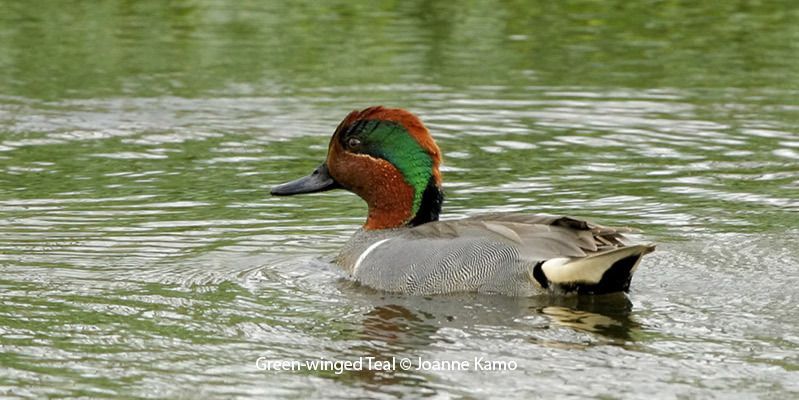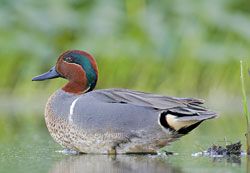
© Greg Lavaty
Green-winged Teal Anas crecca
Family: (Anatidae) Ducks, Geese, and Swans
Preferred Habitat: Marshes.
Seasonal Occurrence: Common October through April.
Notes by Susan Billetdeaux: Green-winged Teals, despite being common, may be difficult to spot. Females, males in nonbreeding plumage, and juveniles are all mottled brown with a bright green wing patch. In contrast, males in breeding plumage are one of our most colorful ducks, rivaling Wood Ducks with their brilliant emerald and chestnut heads and yellow "tail-lights."
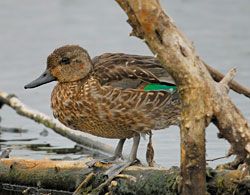
© Joseph Kennedy
Profile by Sarah Lefoley: Male Green-winged Teal have black bills, red-brown heads with a thick green band stretching from the eyes to the nape of the neck, white bands on the shoulders, lighter tan speckled breasts, thick, dark-green bands on the lower parts of the wings, and thinner white bands bordering the green on the top and bottom.
The females are grey-brown and mottled, have darker patches on the top of the head, darker eyelines, and dark green speculums with cream-colored bands on the top and bottom.
The Green-winged Teal is the smallest dabbling duck in North America. Green-winged Teal will feed by dabbling in shallow water, and then lift their food out of the water to consume it, which is a behavior unique to dabbling ducks. They filter out the mud with their bills when they are foraging. Their diet, which is dependent on location and season, consists of the seeds of wetland plants such as grasses, sedges, smartweeds, and pondweeds, and aquatic invertebrates such as shrimp, midges, worms, mollusks, copepods, and crustaceans. Green-winged Teal chicks eat mostly insect larva.
Chicks will leave nests only a few hours after hatching, but may return at night for a couple of days. Nests are often located in meadows relatively close to bodies of water and are hidden well within vegetation. These ducks winter in the southern half of North America. Green-winged Teal have recently been seen in Houston, Galveston, and the Bolivar Peninsula, as of this writing, spring 2020.
-
Cornell Lab of Ornithology
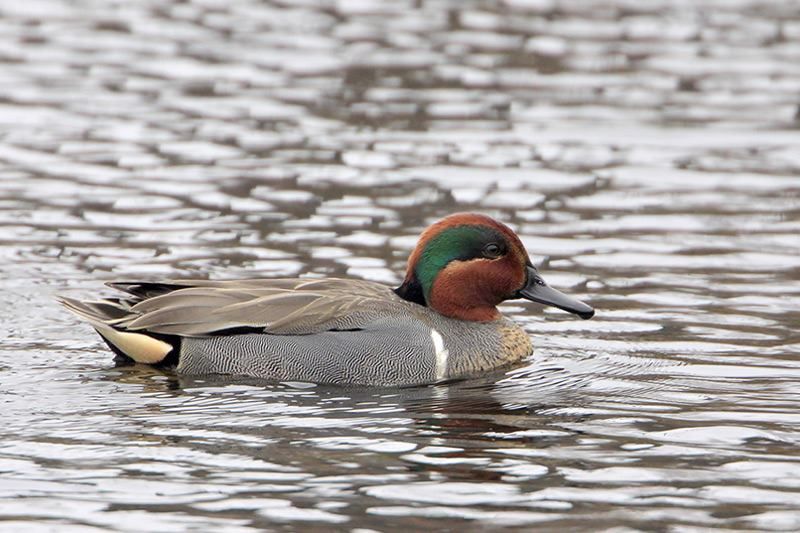
© Greg Lavaty, www.texastargetbirds.com
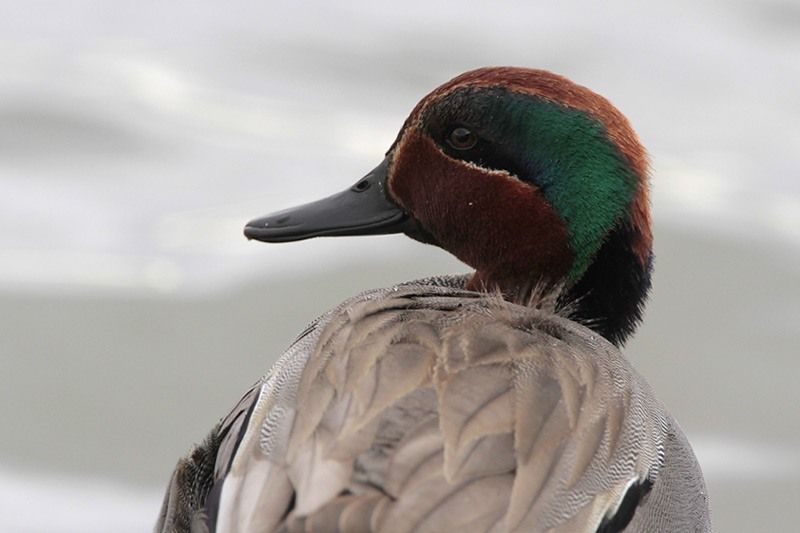
© Greg Lavaty, www.texastargetbirds.com
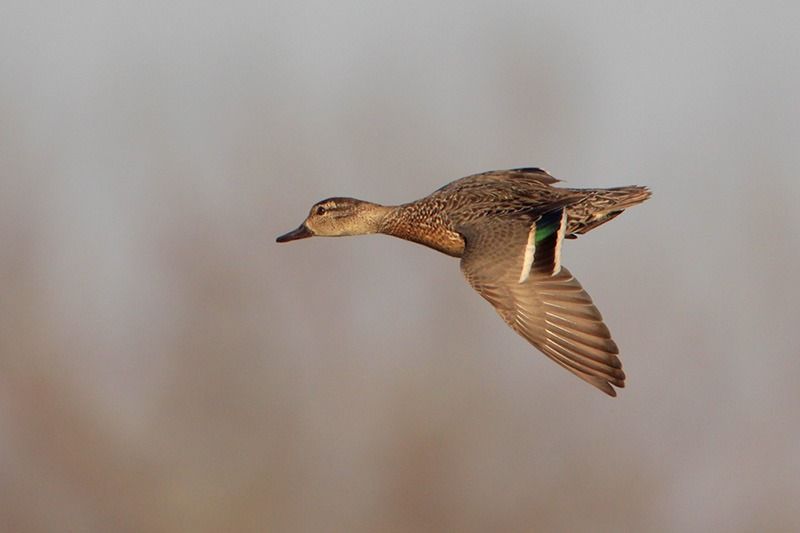
© Greg Lavaty, www.texastargetbirds.com

